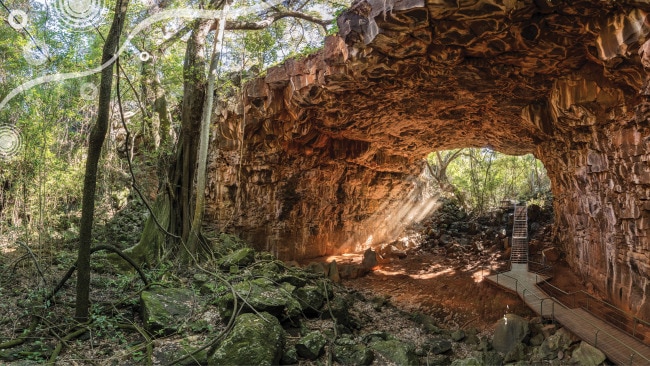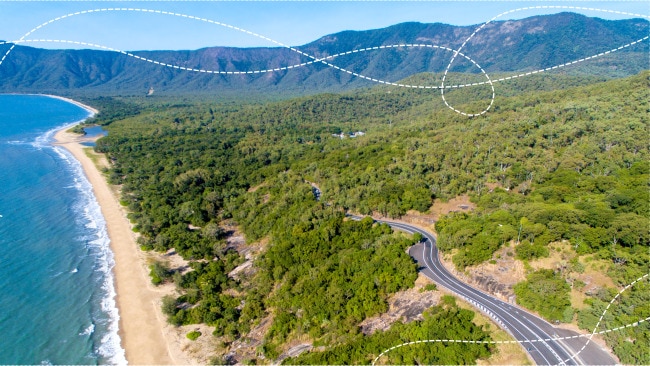Why Tasmanian forests are in danger
TASMANIA is renowned for its wild landscapes bound by coastlines that vary from deceptively tropical in appearance, to rugged shores carved by rogue seas and chilling gales.

TASMANIA is renowned for its wild landscapes bound by coastlines that vary from deceptively tropical in appearance, to rugged shores carved by rogue seas and chilling gales.
A kaleidoscope of diversity and endemism, Tasmania’s mighty montane regions possess intimate scales of colour and texture that characterise its reputation as a haven for an assortment of unique plants and animals. While Tasmania is celebrated for its large and iconic national parks and reserves, many of the state’s critical species remain under threat of disappearing forever.
Dominant social, cultural and political narratives within Tasmania have contributed to nature conservation becoming synonymous with connotations of remote places. Yet, nature exists in a variety of forms across urban and rural landscapes, and many of the state’s remarkable plants and wildlife rely on habitat that only occurs on private land for survival.
The Tasmanian Land Conservancy is a science and community-based organisation that raises funds to protect irreplaceable sites and rare ecosystems by buying and looking after private land in Tasmania. From mountain tops to coastal environments, woodlands, wetlands and grasslands, the Tasmanian Land Conservancy’s private nature reserves protect some conservation in Australia’s most important natural areas. Now, the organisation is embarking on its latest environmental campaign to help save the rapidly declining swift parrot by protecting old-growth blue gum forest within the bird’s core breeding range on the state’s east coast.
It’s a grim assessment; scientists predict the swift parrot is destined for extinction within 15 years unless its habitat is immediately protected. Like so many other critically endangered species, the swift parrot’s precarious status can be directly attributed to human impacts. Old-growth blue gum trees provide vital life support for the bird, yet extensive land clearing in Tasmania following European settlement has meant that only half of the now threatened forest community remains, while collision with human made structures and other anthropogenic changes continue to threaten the swift parrot’s chance of survival.
Amidst devastating accounts of critical habitat loss, scientists from the Tasmanian Land Conservancy have identified 150 hectares of prime swift parrot habitat on the state’s eastern coastal fringe at Little Swanport. The property’s purchase and protection as a reserve will not only permanently secure prime swift parrot breeding habitat, but will also aid other declining woodland birds and small mammals – including the iconic Tasmanian devil. Once regarded as a savage predator with few redeeming features, the devil is now more widely acknowledged as integral to Tasmania’s ecological and cultural landscape and can be found thriving in Little Swanport’s woodland terrain along with eastern quolls, bettongs and eastern barred bandicoots. Donations to the Tasmanian Land Conservancy will directly support these at-risk species by providing proactive, innovative and permanent protection, backed by robust scientific programs and rigorous ongoing management.
In a world of diminishing naturalness, Tasmania is receiving burgeoning interest across a variety of industries that are overwhelmingly driven by the state’s plethora of rich and unique nature-based opportunities. Located on the Great Eastern Drive between world-renowned Wineglass Bay and Maria Island, Little Swanport epitomises the type of vital landscapes that are passed through while exploring Tasmania and that impact greatly upon visitor experiences. To safeguard these critical areas, the Tasmanian Land Conservancy will continue to achieve environmental conservation that values nature and the economic, cultural and social benefits that it provides us all.
Private, non-government and apolitical land conservation safeguards natural areas and wildlife in ways that public land cannot. The Tasmanian Land Conservancy has grown to become one of Tasmania’s largest private landowners and it is the organisation’s vision for Tasmania to be a global leader in nature conservation.
Originally published as Why Tasmanian forests are in danger



